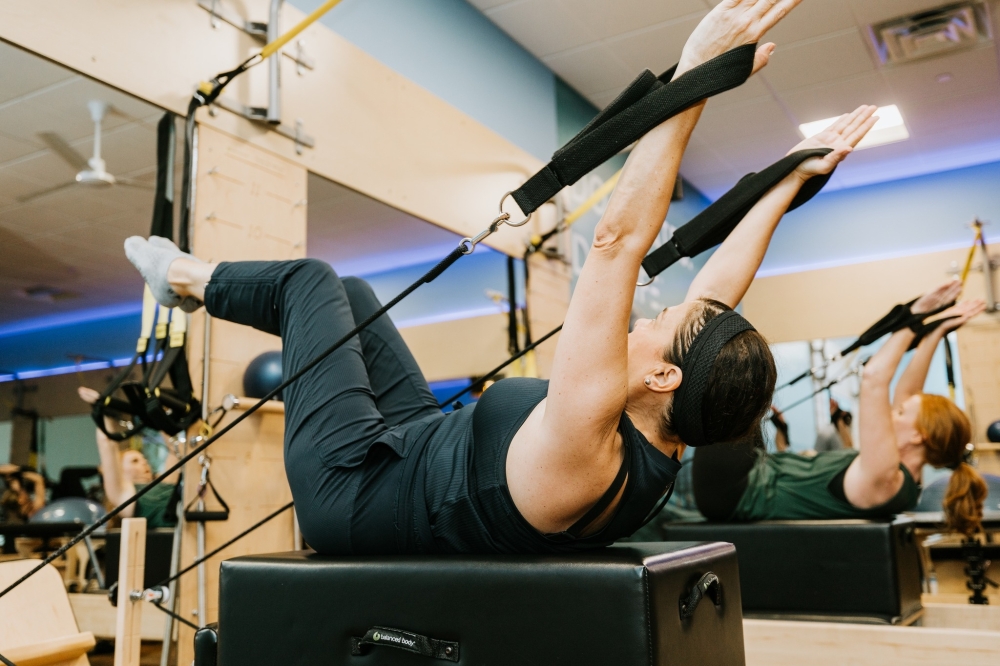Fitness
Aerobic Exercise Subjectively Improves Life Quality in Cancer Patients –

While there was no objective data for cognitive improvement, study participants self-reported clearer thinking and, thus, a better quality of life.
According to a recent study, aerobic exercise showed promise for breast cancer patients’ perception of their quality of life while undergoing chemotherapy. However, at the same time, researchers noted that it didn’t appear to make a notable difference in cognitive function or protect against decline.
While chemotherapy remains a standard and necessary treatment for many cancers, including breast cancer, it often brings with it a range of unwelcome side effects, including hair and weight loss, weakness, fatigue, and cognitive dysfunction. This phenomenon, often referred to as “chemo brain,” can impair memory, concentration, and genera thinking abilities, affecting daily life for patients. With a focus on this challenge, researchers have been investigating whether aerobic exercise might offer a solution by helping to maintain (or even improve) cognitive function during this mentally taxing time, just the same as it can help with maintaining muscle strength and reducing the detrimental effects of rapid weight loss both from the treatments and the cancer itself.
Up to 75% of women treated for breast cancer have reported experiencing problems such as difficulty remembering things, staying focused, and processing information. Objective tests, too, reveal that many patients show impairments in areas like executive functioning, verbal ability, and spatial reasoning. Even more troubling, these deficits can persist long after chemotherapy ends, making it difficult for survivors to return to their previous routines, work, and social lives.
Aerobic exercise has long been promoted for its physical health benefits, particularly for improving cardiovascular fitness. However, studies have also shown that it can have positive effects on cognitive abilities, especially in older adults and those with mild impairment. Given these findings, researchers have turned their attention to cancer patients, hoping that similar results might apply. Despite this hope, the evidence has been somewhat inconsistent to date, including in the current study. Many studies have been performed with the intent to examine the connection between exercise and cognitive function in cancer patients. Yet, they’ve been flawed and limited in scope, such as using small sample sizes or a reliance on subjective self-reports rather structured assessments.
The latest study, conducted across two Canadian cities, involved 57 women with breast cancer, all preparing to undergo chemotherapy. Participants were divided into two groups: one group engaged in a program of aerobic exercise during their chemotherapy treatment, while the other followed standard care and began exercising only after completing their treatments. The exercise routines were a mix of supervised sessions and activities that could be done at home. Over the course of 12 to 24 weeks, the researchers monitored both groups using neuropsychological testing designed to objectively measure executive functioning, alongside self-reported assessments of cognitive function and quality of life.
At the end of the period there was no significant difference in cognitive function between the group that exercised during chemotherapy and the control group. This finding was somewhat surprising, given the expectations. However, when looking at the patients’ own reports of how they felt cognitively, the exercise group showed clear improvements. They reported feeling sharper, more focused, and better able to manage daily tasks, which translated to a higher perceived quality of life compared to the control group.
Several factors could have contributed to the disconnect between the objective tests and the patients’ self-reports. First, the assessments used may not have been sensitive enough to capture subtle changes brought on by incorporating exercise, or these changes might only be noticeable in everyday life rather than in a controlled testing environment. Additionally, the participants may not have experienced severe cognitive impairment to begin with, meaning that the potential for exercise to produce measurable improvements was limited. It’s also possible that the exercise intervention period wasn’t long enough to bring about significant objective results.
Whether functioning truly improved or not for those who engaged in aerobic activity, the findings suggest that incorporating this form of exercise into a care plan for breast cancer patients undergoing chemotherapy could help improve their sense of well-being, and maintaining mental health is just as important during this period as maintaining physical health.
Sources:
Cognitive benefits of aerobic exercise in breast cancer care
Aerobic exercise and Cognitive functioning in women with breast cancer (ACTIVATE): A randomized controlled trial
Clinical trial suggests aerobic exercise helps prevent brain fog caused by chemotherapy

Fitness
Starting strong in 2025: How to build a fitness routine that will last – WHYY

Ready to make this year your healthiest yet? Many of us start the new year with fitness goals. We’ll explore the physical and mental benefits of exercise, whether it’s weightlifting, cycling, jogging, or simply adding more movement to your day. We’ve also gathered advice from our listeners in the Greater Delaware Valley on staying motivated, breaking through workout ruts, and the life-changing impact of exercise.
Guests:
Ben Kenyon, veteran NBA performance coach.
Gretchen Reynolds, writer of the “Your Move” column for The Washington Post.
Fitness
Can Exercise Ease Knee Pain? Here's What the Research Shows
By Dennis Thompson HealthDay Reporter THURSDAY, Jan. 9, 2025 (HealthDay News) — Movement is medicine, or so they tell people with knee osteoarthritis — but are they right? A recent evidence review calls into question just how helpful exercise can be for easing the pain of knee arthritis. “Exercise …
Fitness
Club Pilates Allendale brings new exercise opportunities to north Austin

The new pilates studio, which opened Jan. 9, offers classes for all experience levels, including an intro class, muscle and stamina building class, and cross-training class geared for teens.
The fitness center also offers private training opportunities. Those interested in classes or personal training can find an assortment of membership packages on the studio’s website.
“>
-

 Business1 week ago
Business1 week agoThese are the top 7 issues facing the struggling restaurant industry in 2025
-

 Culture1 week ago
Culture1 week agoThe 25 worst losses in college football history, including Baylor’s 2024 entry at Colorado
-

 Sports1 week ago
Sports1 week agoThe top out-of-contract players available as free transfers: Kimmich, De Bruyne, Van Dijk…
-

 Politics1 week ago
Politics1 week agoNew Orleans attacker had 'remote detonator' for explosives in French Quarter, Biden says
-

 Politics7 days ago
Politics7 days agoCarter's judicial picks reshaped the federal bench across the country
-

 Politics5 days ago
Politics5 days agoWho Are the Recipients of the Presidential Medal of Freedom?
-

 Health4 days ago
Health4 days agoOzempic ‘microdosing’ is the new weight-loss trend: Should you try it?
-

 World1 week ago
World1 week agoIvory Coast says French troops to leave country after decades













